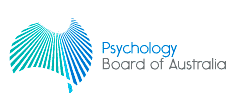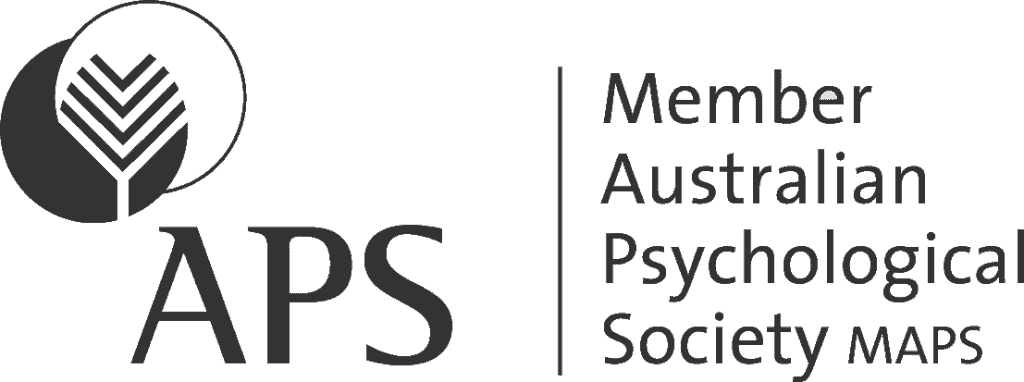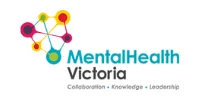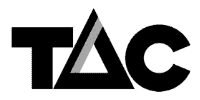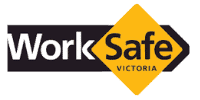
Many of us have been working from home during the pandemic, but now restrictions are beginning to ease and businesses are welcoming staff back into shared work environments. While we may be looking forward to this, we may also feel a bit hesitant or anxious about going back to in-office work.
Feeling anxious is not necessarily a bad thing. It is a normal response that has helped humans manage challenging situations for millennia. However sometimes feelings of anxiety become so strong that they affect our daily life. This level of anxiety can impact on a successful transition back to the work environment. This article discusses common anxiety traps and briefly considers strategies to manage these traps and facilitate a successful workplace transition.
Why you might feel anxious about returning to work
- The following concerns are frequently expressed by individuals preparing to return to work:
- Concerns about exposure to Covid-19
- Issues around the commute to work: For example, going from social distancing to sharing a peak-hour train with dozens of other commuters
- The need to fit back into office routines after the flexibility of working from home
- Readjusting the home routines we developed while working from home.
We may also feel concerned about workplace changes arising from the pandemic. The term ‘new normal’ is frequently used when discussing post-pandemic life. The term is used to highlight how measures to control the spread of the pandemic have resulted in new ways of going about our lives, work, and interactions with other people. Our work-place may not be as we remember it and we can expect ongoing changes to routines and processes, with new requirements such as wearing masks, taking temperatures, and social distancing. Thus, ‘on one hand, people are excited and relieved, but they may have trepidation with a mix of concerns’ (Blashki, cited by Sutton, 2021). To ensure a successful transition from working from home to working in a shared environment we need to manage our anxiety so that it operates positively rather than negatively.
What is anxiety?
Anxiety is a normal physical and emotional response to situations we perceive as challenging. Physical responses can include increased heart and breathing rate and the release of hormones designed to keep us vigilant. Emotional responses can range from feeling uneasy or nervous to feeling very distressed or overwhelmed. Feeling anxious can help us to deal with issues we face in everyday life. Anxiety can also act as a motivator, encouraging us to put extra effort into our professional, recreational and social activities. Thus, some level of anxiety can help us manage the concerns we have about returning to the workplace. However sometimes anxiety can become debilitating. Rather than seeing things how they really are, we think more and more about negative possibilities and scenarios and expect the worst. We are often unaware that we are doing it. This way of thinking is sometimes referred to as stepping into an anxiety trap (Chelsea Psychology Clinic, 2021).
Anxiety Traps
A number of different anxiety traps are discussed in the literature. These include:
Catastrophising
When we catastrophize, we blow things out of proportion, exaggerating the negative impact of a situation. We assume the worst possible outcome regardless of how realistic or likely that outcome is. Catastrophizing about returning to work may see us exaggerate the difficulties we face or overestimate the risks and consequences. For example, we may overestimate the likelihood of contracting the virus: ‘If the office guidelines aren’t followed, I will contract COVID-19 and then I will die.”
Mind reading
this trap sees us convinced (without any evidence) that we know what others are thinking about us and we know they are thinking the worst. For example, ‘I know they think I’m not following the hand washing and social distancing rules carefully enough.’
Fortune telling
Fortune telling constantly predicts that the future will turn out badly. Such predictions are made without any verifying data or evidence. Example: I’ve been doing what I can to obey all the requirements and reduce the risks, but I just know that I’m going to get really sick’.
Black-or-white thinking
This trap occurs when we only look at situations in terms of one extreme or the other. We perceive a situation as either very good or very bad. We do not see (or even look for) a range of possible outcomes between the two extremes. This limits our capacity to effectively manage issues since, in reality, most situations are somewhere in the middle.
Overgeneralising
When we over-generalise we make broad statements about situations and people, including ourselves, with very limited experience or evidence. Over-generalisation can lead us to think that terrible outcomes are much more likely to occur than is actually the case. People who overgeneralize often use words like always, never, everybody and nobody. Example: ‘This will go on forever.’
Anxiety traps are not discrete. They overlap and we may find that we are using patterns of thought from more than one.
To facilitate a successful return to the workplace, we need to be aware of and seek to manage the anxiety traps we may have inadvertently fallen into.
Strategies to manage anxiety traps
Since anxiety is a normal response to situations that we perceive as challenging, the aim is not to cure it, but to manage it.
What you can do about it, is to notice it, name it, and then ask yourself what you would be thinking if you weren’t falling into that thinking trap (Wright, 2016).
Steps to manage anxiety traps include
- Notice our perceptions
- Name our anxiety traps
- Challenge our anxiety traps
Notice our perceptions
Our perceptions impact on how we react. We can feel either worried or excited about going back to the workplace. Worrying may create a negative mind-set while being excited may see us more able to cope. Thus, it is not the situation itself that gives rise to anxiety traps. It is our perceptions of that situation. A first step to managing anxiety is therefore to differentiate our perceptions from actual events. This involves asking questions such as:
- What is the situation? What actually happened? Are these facts that everyone would agree on?
- What am I thinking and/or telling myself?
- How am I feeling?
The answers to these questions help us to separate our thoughts from actual events. This can make us aware of inaccuracies in our thinking. If we do this regularly, perhaps recording our answers in a way that differentiates our thoughts from identified facts, we become more aware of how we are thinking.
Name our anxiety traps
Comparing our perceptions or thoughts with identified anxiety traps can point to the specific ones we are using. Identifying our anxiety traps helps us to better understand and manage the trap we have stepped into. For example, if we overgeneralise we can be aware of using terms such as never or always. It’s not unusual to fall into more than one thinking trap and these may vary according to the particular situation.
Once we have identified our anxiety traps, we can challenge them.
Challenge our anxiety traps
Anxiety trap perceptions are not based on evidence or data. Therefore, we can challenge our anxiety traps by asking
- Is this thought a fact or an opinion?
- What evidence is there to support it?
- Is there any evidence to disprove it?
- Am I confusing a possibility with a probability?
(Chelsea Psychology Clinic, 2019, Hoge 2021).
Generate alternative responses.
Once we’ve identified and challenged our anxiety trap(s), we can generate some alternative thoughts.
For example:
Catastrophising
Ask ourselves what, realistically, the odds are that our worst fear will come true. Then, look at other possible outcomes and ask ourselves, based on data, what’s most likely to happen?
Mind reading
The reality is that no-one can read minds and we can never really know what others are thinking unless they tell us. If we step into the mind-reading trap, we should ask ourselves: What’s the evidence? And then remind ourselves: We can’t read minds.
Fortune telling
To challenge this trap, we need to look for evidence to support our perceptions. We can do this by focussing on the facts we have identified and trying not to speculate. We can remind ourselves that no one can predict the future with any certainty.
Black-or-white thinking
We need to remind ourselves that things aren’t either totally black or totally white. There are shades of grey. We should look for other possible outcomes – shades of grey.
Overgeneralising
Avoid terms such as always, never, everybody and nobody. Look for exceptions or alternatives to these sweeping thoughts. When we realise that we are generalising, we can remind ourselves not to.
Generating as many alternative responses as we can for each anxiety trap can encourage us to review and rethink our negative perceptions. Seeking evidence or data to support and/or challenge our perceptions can highlight the inaccuracies of anxiety trap thinking.
(Boone, 2018, Chelsea Psychology Clinic, 2019, Hoge, 2021).
Conclusion
While many of us are looking forward to returning to the shared workplace, we may also be experiencing some anxiety. This is normal. Indeed, some level of anxiety helps us to deal with challenging situations. Sometimes, however, feelings of anxiety become so strong that they may impact our ability to successfully transition back to the work environment. Rather than seeing things how they really are, we think about negative possibilities and scenarios and expect the worst. We are often unaware that we are doing it. Understanding what anxiety is, what it does and how we can manage it will help us to manage these thinking traps and transition successfully back to shared workspaces.
This article is a general overview of current professional and research literature. It is intended to provide information not advice. If you, or someone you know is seeking advice or support regarding anxiety, it is strongly recommended that you seek expert professional help.
The information in this article is not a substitute for informed professional advice. For expert advice, it is recommended that appropriate professionals be consulted.
References
Black Dog (2021) After Covid-19, What will ‘normal’ life be like? https://www.blackdoginstitute.org.au/news/after-covid-19-what-will-normal-life-be-like/
Canadian Mental Health Association (2021), Covid-19 How Can I Challenge Thinking Traps? https://www.heretohelp.bc.ca/wellness-module/wellness-module-8-healthy-thinking
Chelsea Psychology Clinic (2019), Thinking Traps: How to let go of negative thoughts, London https://www.thechelseapsychologyclinic.com/mood-management/thinking-traps/
Hoge, B (2021), Five Common Thinking Traps and How to Avoid them, the University of Alabama at Birmingham. https://www.uab.edu/news/health/item/12251-five-common-thinking-traps-and-how-to-avoid-them
Boone M (2018) Gently Challenging your Thinking Traps, Lyra Inc, https://www.lyrahealth.com/blog/getting-to-know-your-thinking-traps/
Lisa Maragakis (2021), The New Normal and Coronavirus, John Hopkins Medicine https://www.hopkinsmedicine.org/health/conditions-and-diseases/coronavirus/coronavirus-new-normal
Sutton, M (2021), Tips for managing back-to-work anxiety after working from home through the COVID-19 pandemic ABC Everyday, https://www.abc.net.au/everyday/tips-for-managing-back-to-work-anxiety-during-the-pandemic/12967996
Wright, A (2016) Thinking Traps, Resilience Centre, NSW https://www.theresiliencecentre.com.au/2016/11/15/thinking-traps/

